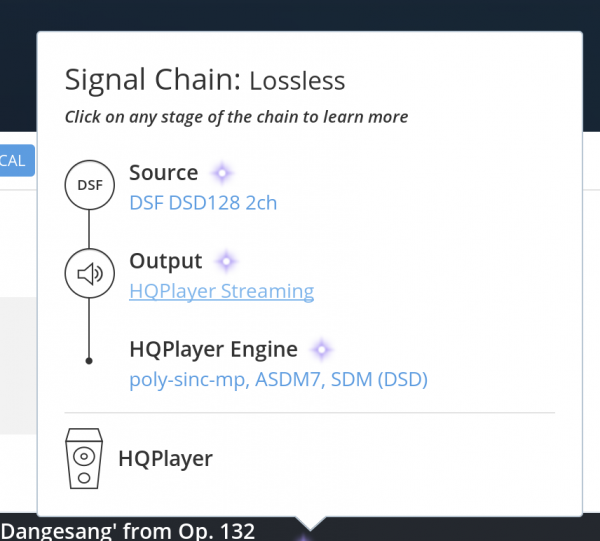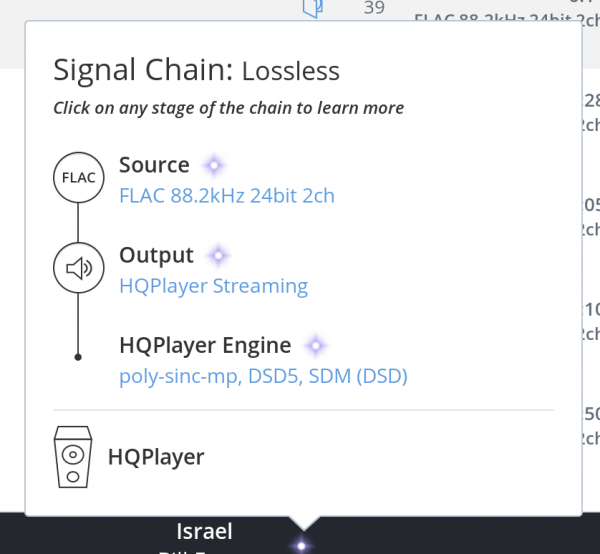Hi Guys,
I've been tinkering with a streamer device for a good 8 months now.
Edit: I named this unit "Superstream"
I've gone through several pieces of hardware and software so far, and have come up with an incredible budget system. Think of it like a streamer such as the Auralic Aries, but optimized to deliver even better sound. Simplicity and ease of use is another big bonus with this system. It also uses quality Intel hardware that comes with a 3 year warranty, and is also fanless. You really can't go wrong. I've set it up specifically as an NAA device for HQplayer. This is the best way possible to listen to HQplayer. It also allows taking the server out of the listening room. The bad part about HQplayer is the GUI. But that will soon be a thing of the past with the HQplayer integration with Roon. This will allow Tidal, and local files to all process through HQplayer's DSD upsampling algorithms, and control via the best mobile app GUI around. Best of all worlds. What do you need to buy? See below:
http://www.amazon.com/Intel-Thin-Ca..._UL160_SR135,160_&refRID=0T8Q57HXD0SBW0WF9V0Q
http://www.amazon.com/Crucial-PC3-1..._UL160_SR160,160_&refRID=19M2XHTV5WPMWQK34TM4
Those 2 items is all the hardware required. for even better performance, a LPS can be used to power the streamer.
Update: software is now 100% free.
So all you'll have to do for initial setup is pop the RAM chip in, power up connected into a monitor, keyboard and mouse and disable unnecessary features in the BIOS by holding in the F2 key. Once that's done, it's configured forever.
After that, pop the USB stick in the rear port, plug an Ethernet cable connected to your network in the DAC, USB cable to your DAC and 10 seconds later it's ready to connect with any server on the network running HQplayer. If your DAC happens to be of the chipless DSD variety, this system will be able to give you the best sound possible by using HQplayer to resample all PCM to DSD 256, as well as the best sounding native DSD. And if it has a chip, you will still get the best sound resampling to the highest DSD rate compatible. If your DAC is PCM only, upsample to the highest compatible PCM rate for the best sound.
That's all there is to it. If anyone is interested in this, let me know. It really is the real deal!!
I've been tinkering with a streamer device for a good 8 months now.
Edit: I named this unit "Superstream"
I've gone through several pieces of hardware and software so far, and have come up with an incredible budget system. Think of it like a streamer such as the Auralic Aries, but optimized to deliver even better sound. Simplicity and ease of use is another big bonus with this system. It also uses quality Intel hardware that comes with a 3 year warranty, and is also fanless. You really can't go wrong. I've set it up specifically as an NAA device for HQplayer. This is the best way possible to listen to HQplayer. It also allows taking the server out of the listening room. The bad part about HQplayer is the GUI. But that will soon be a thing of the past with the HQplayer integration with Roon. This will allow Tidal, and local files to all process through HQplayer's DSD upsampling algorithms, and control via the best mobile app GUI around. Best of all worlds. What do you need to buy? See below:
http://www.amazon.com/Intel-Thin-Ca..._UL160_SR135,160_&refRID=0T8Q57HXD0SBW0WF9V0Q
http://www.amazon.com/Crucial-PC3-1..._UL160_SR160,160_&refRID=19M2XHTV5WPMWQK34TM4
Those 2 items is all the hardware required. for even better performance, a LPS can be used to power the streamer.
Update: software is now 100% free.
So all you'll have to do for initial setup is pop the RAM chip in, power up connected into a monitor, keyboard and mouse and disable unnecessary features in the BIOS by holding in the F2 key. Once that's done, it's configured forever.
After that, pop the USB stick in the rear port, plug an Ethernet cable connected to your network in the DAC, USB cable to your DAC and 10 seconds later it's ready to connect with any server on the network running HQplayer. If your DAC happens to be of the chipless DSD variety, this system will be able to give you the best sound possible by using HQplayer to resample all PCM to DSD 256, as well as the best sounding native DSD. And if it has a chip, you will still get the best sound resampling to the highest DSD rate compatible. If your DAC is PCM only, upsample to the highest compatible PCM rate for the best sound.
That's all there is to it. If anyone is interested in this, let me know. It really is the real deal!!
Last edited:



